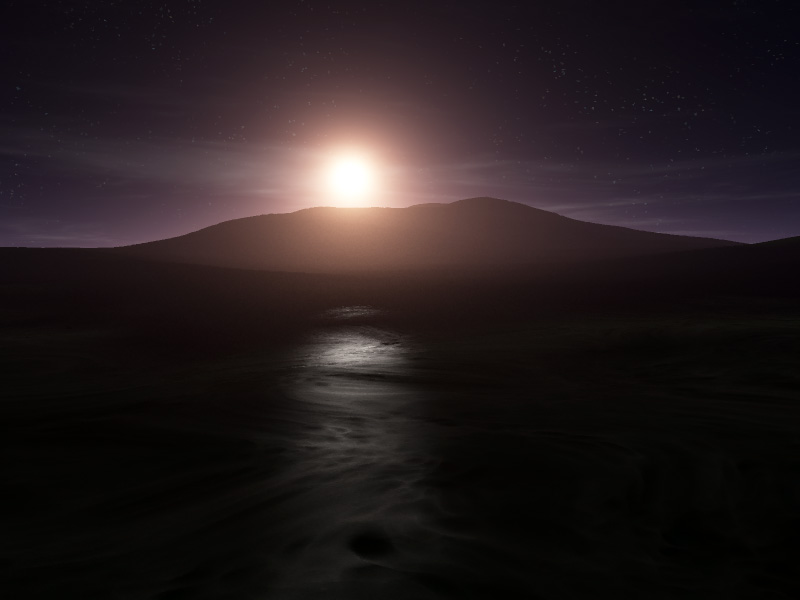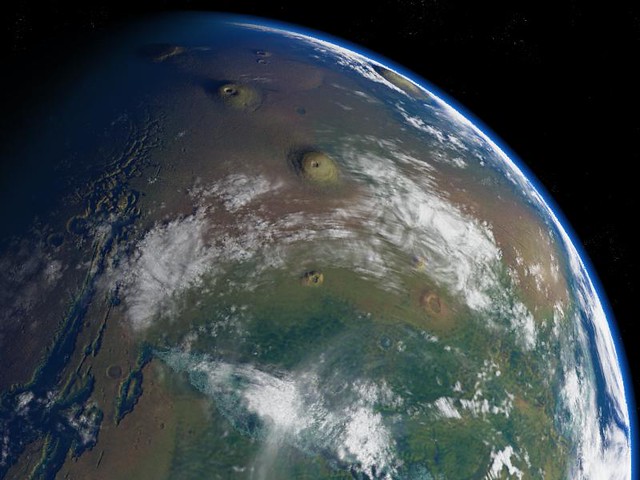Thanks, Badger.
I think it´s to early for mans presence, I haven´t explored the beauty of the land yet.
When I browsed through the Nasa "hirise" image galllery yesterday (see link above) I didn´t even lke the idea of terraforming so much because Mars as it is is sooo beautiful!
Great shortmovie anyway, thanks for that.
Thanks nethskie.
I don´t know if my way is the optimal, but I use bumpmaps as follows:
I put a Surfacelayer in the terrain group (before compute terrain) and use an image map shader with you bumpmap as its displacement funktion. My Mars has roughly realistic proportions with a radius of 3.4e006 m and an displacement amplitude of 40000 m
The image has to be projected spherically, with its center at 0/0/0 if you enable "rotate texture with planet" and "translate texture with planet" in the planets settings. this way you can move your planet around, but it gets tricky with additional procedural landscape.
f you switch of the two texture options put your imagemaps center at the planets center and your map won´t move with the planet, but surface layers act more predictable. So the latter is better for closeup shots, for rotating planets use the first option. Thats as much as I learned recently.
And here some more impression of the green Mars:
http://farm9.staticflickr.com/8175/7974675769_b07a1138a1_c.jpgNot so green in a high valley of noctis labyrinthus
http://farm9.staticflickr.com/8454/7974675980_ab632197da_c.jpga little further down, Thanks to dandelOs planetary gras shader!
http://farm9.staticflickr.com/8179/7974675796_ae8c98c15c_c.jpgstill in noctis, no new settings for this shot, that´s how it was when I first came there.

Low tide in the argyre-sea. Shadows in Atmosphere would have been nice, but that will take days to render.

you may know these

Argyre sea and Phobos with its old surface, back then I didn´t know better. For the new Phobos, look here:
http://www.planetside.co.uk/forums/index.php?topic=15069.0Best Regards,
J